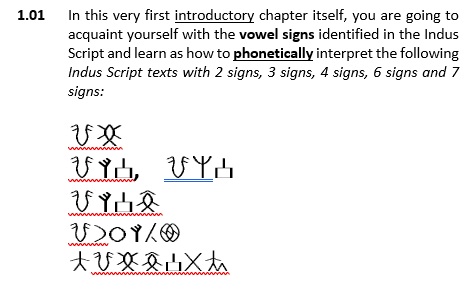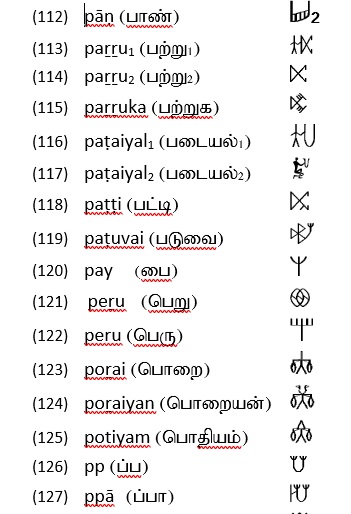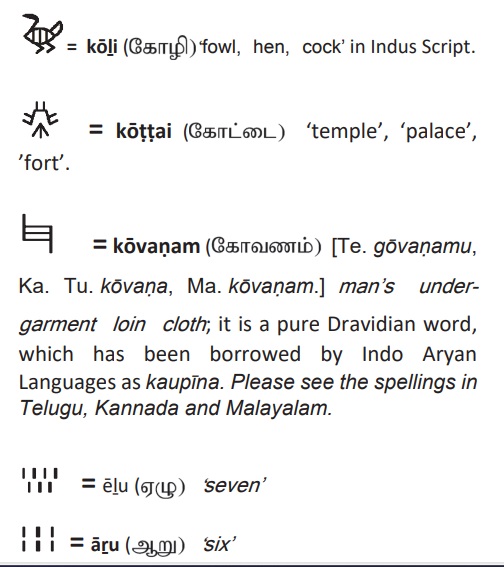|
01. **Nom-de-convenance:
Sandira Segaran
02. Official Name:
Sandirassegarane Gurunathan
சந்திரசேகரன் குருநாதன்
(where Sandirassegarane is the given name and Gurunathan , my father's name but not family name; hence
the need for a nom-de-convenance)
03. Age:
78 years (DOB: June 28, 1945)
04. Education
M.Sc. in Mathematics
05. Professional Career:
Bureaucrat.
Served in various capacities under the
Government of Pondicherry for about 38 years,the longest stint being in the Chief Secretariat, Pondicherry. I
retired in 2005 as Senior Accounts Officer from the Electricity Department.
06. Language skills:
Known: Tamil, English and French;
Acquainted: Sanskrit, Kannada, Malayalam,
Telugu, Hindi and Spanish, and some basics of Gujarati and Urdu.
Learning the rudiments of Middle Egyptian,
Sumerian and Akkadian.
07. Script skills:
(1) Scripts used by known and acquainted languages;
(2) Elements of ancient scripts such as Egyptian
hieroglyphs, Sumerian and Akkadian Cuneiforms, Brahmi (northern and southern);
08. My Intellectual Pursuits:
(1) Mathematics: I have spent a lot of my valuable time
over trying to solve some of long standing problems of Number Theory such as, Fermat's Last Theorem, Goldbach Conjecture and
Twin-Prime Conjecture, particularly the last two. I have tried to apply Topology and Abstract Algebra for the purpose;
(2) Theoretical Physics: I tried to use the principles
of Relativity Theory and Quantum Mechanics to prove that neutron is the only anti-matter in the Universe (anti-Hygrogen) with
a configuration consisting of one anti-proton (negatron) as nucleus with one revolving positron (anti-electron). In fact the first
paper I tried to write was on Anti-Universe;
(3) Philosophy: I am an ardent student of philosophy. I learnt the
tenets of Indian philosophy through the works of Dr.Radhakrishnan and the features of Western Philosophy through the works of Bertrand Russell.On occasions
I also tried to read some of the original philosophical writings such as Brahma Sutra, Bhagavad Gita, Keno Upanishad, Viveka Chudamani and Bhaja Govindam
of Sankara, and Dammapada of Nagarjuna on Indian side, and also the classical writings of DesCartes, Leibnitz, Spinoza, Hegel, Kant, Wittgenstein etc.
on western side. Because of my propensity for the intellectual writings of Russell, I was mentally driven to the likes of his
Analysis of Matter, Analysis of Mind, Our Knowledge of the External World, Principles of Mathematics, An Introduction to Mathematical
Philosophy, Princicipia Mathematica etc. thereby to analytical logical thinking exemplified in Symbolic Logic otherwise
called Formal Logic or Mathematical Logic. In fact, my first attempt to write a book was on the subject of Symbolic Logic in
Tamil titled 'குறியீட்டுத் தெள்
ளியல் (kuṛiyīṭṭu
teḷḷiyal), unfortunately it never saw the light of the day and it has still been remaining unpublished since 1989.
(4) Linguistics: At every stage of my life I have been trying to acquaint with
one language or the other; the list is very long. It all began with Hindi and Latin while still in High School (Greek always shied away from
me all along), it was German and Spanish during my one-year PUC and two-year stint with an engineering college. Therefter I tried
Kannada, Gujarati and Malayalam. My association with Sri Venkateswara University as an external candidate for a basic degree and a
PG degree and concomittant compulsory stayings in Tirupati kindled my interest in Telugu. I took a correspondence course in Sanskrit
from an institution at Bangalore and simultaneously I was also taking a course on Urdu. I tried Arabic with some study materials received from
Egyptian Government. For a while I was very serious with Japanese, feeling that it is nearer to Dravidian Languages. Unfortunately I never had an opportunity to learn Chinese and Polynesian Languages. The above verbiage is likely to give
the reader an impression that I am an astounding linguist of first grade, but the truth is different. As one progresses in age, the most pragmatic truth
he realizes is that the more you read, the more you forget. This adage is applicable not only to the large number of thrillers read
but also to technical, literary and academic readings.The percentage of what I have read or learnt still remaining active in the retrievable portion
of my brain may actually be considerably low.
(5) Computer Science I am a late-comer to this modern area. Eventhough
I learnt programming skills in some of earlier computer languages and even underwent a computer training program organized by the
Government of India in association with CMC in Kolkata during 1986 for the benefit of bureaucrats, I took real interests in various
aspects of computer science and programming in 90's only. My first ever programming was to aid my then serious mathematical reseaches
relating to GoldBach conjecture and Twin prime conjecture. Thereafter I have slowly diverted my computer skills to other areas of
interest.
09. Some Experiments with Scripts:
(1) At the age of thirteen, while still a high-school student
with Lycée Français, Pondicherry, I was disturbed by the irregularities of Tamil Script and I, therefore,
devised a completely regular script for Tamil language and used it for my private writings for a couple of years;
(2) At the age of 19 years (1964) I happened to live for a few
months in Bangalore . In those days I did not know a single letter of Kannada language. As I had a whale of time at
my disposal, I decided to venture into the exciting field of deciphering unknown scripts.
Though it was easy to procure a basic Kannada language book from any book-shop, I've decided to decipher
the script exclusively from newspapers. Bilingual ads in the newspapers served as Rosetta stones. Within
a week I've completely deciphered the Kannada Script and learnt its alphabet. Actually out of one week
mentioned above two days were spent to resolve a confusion between ಟಿ (ṭi) ಚ (ca). The confusion was
created by a bilingual ad given by Tata Finley Tea. I resolved the issue by discovering that unlike in
Tamil newspaper ads, the word 'cha' was used in Kannada instead of 'tea'.
(3) During 1964-65 I happened to live in Ahmedabad, Gujarat
and I repeated the Bangalore exercice with Gujarati. It took me only a couple of days to complete the effort since I had
already known Dev Nagari and Gujarati script is only one its modified versions.
(4) When the historic anti-Hindi agitation was literally
burning Tamil Nadu and Pondicherry, I was still in Ahmedabad, sadly following the day-to-day events from
English and Gujarati newspapers circulated in Gujarat. For a while I was nurturing the idea of using a
common script for all major languages of India as a first step towards national integration much talked
of at that time. After a lot of efforts I developed a rationalized Roman Script with diacritic accent
marks for long vowels and separate letters for cerebrals and additional sibilants, by freely borrowing
from Greek and Russian scripts. As there was no votary to the idea even amongst my friends, I changed
my mind and dropped the idea once forever. However, I continued to use the Roman script for recording my thoughts in Tamil. In this Tamil edition of the Rationalized Roman Script, I have introduced separate
signs not only for ற ழ ள (ṛ ḻ ḷ) but also for
kuṛṛial ukaram and aikāra kuṛukkam as well
as for voiced and unvoiced surds so as to do away with ஒற்று (oṛṛu) system.
Further I have introduced phonetic rules so that the difference between spoken and written Tamil could be reduced by about 75%, provided you know enough
linguistics to differentiate spoken language from slang or cockney.
(5) For a while during 1967 I was even toying with
a forgotten linear script rarely used for Tamil; this script was found in Cuddapah inscriptions.
(6) During 1970 my interest in the undeciphered Indus
Script was kindled by an article appeared in the Hindu Sunday Edition to the effect that the script has been
cracked by a Finnish scholar by name Asko Parpola. I have been following the pro and contra views expressed
by various Indian scholars on the language of Indus Script as well as the herculean compilation work
undertaken by the reputed Tamil-Brahmi epigraphist, Iravatham Mahadevan under the aegis of TIFR. Now both
Asko Parpola and Iravatham Mahadevan continue to be the stalwarts of Indus script research.
(7) Further the Indus Non-Script Theory put forth by
the researchers, Steve Farmer, Richard Sproat and Michael Witzel in their paper 'The Collapse of the
Indus-Script Thesis: The Myth of a Literate Harappan Civilization' published in the Electronic Journal
of Vedic Studies, 11-2 (2004) has not deterred me from my years long determination to solve the riddle
of Indus Script. After all I am a Symbolic or Mathematical Logician, why not become a symbologist like Robert Langdon,
the hero of Dan Brown thrillers and crack another Da Vinci Code ? As averred by
non-script theorists even if it happens to be 'a relatively simple system of religio-political
signs that could be reinterpreted in any language', I am determined to find out that elaborate
system of 'highway and airport symbols' so as to enforce, if possible, a 'cultural cohesion' in this
multi-lingual and multi-cultural sub-continent.
10. My software programming efforts:
(1) An interactive computer-aided-program for students preparing
for GMAT exam. The software came up wonderfully; it had both 'test' and 'practicing' modes. Under the practicing mode the student
is able to watch what happens when he lingers long over a question or when he gives wrong answers continuously for two or three questions.
or when he answers correctly for two or three questions continuously; in such cases he gets a penalty or bonus credit, whcih influences
the nature of future questions. The software contained many more such real-time characteristic features. However I was
forced to give up this project at the last moment due to withdrawal of support from my Canadian sponsors.
(2) While I was serving with the Electricity Department, Pondicherry as Senior
Accounts Officer, the Department received pressure from AG Audit to prepare Proforma Accounts for the last ten years in respect of
activities of the department. However, the department argued that unlike the Electricity Boards in other States, the Electricity Department
in the UT of Pondicherry is only a Govt. department like any other, say, Agriculture, Education, Fisheries etc. and only Electricity Boards are required to prepare annual proforma accounts;
but the AG Office did not accept the explanation and on their further insistence, I took up on behalf of the Electricity Department, the onerous duty and tried to give a digital solution to the issue. After putting in several months of very hard work
I developed a Proforma Accounts Generator software, which worked very satisfactorily and Proforma Accounts for
ten years were prepared. However, when everything was ready the AG office withdrew their demand and the Electricity Department lost interest
and my software along with my hard work went to the limbo.
(3) Sudoku Solver: Sudoku mind game is an intellectual pass-time. Sudoku Games
are published daily in newspapers and in several websites. I developed a small program to solve the game mechanically. With the help of this simple program, it is possible to get a step-by-step solution to
any such game. This program was conceived and executed purely as an intellectual exercise.
(4) Machine Translation between English and Tamil A challenging project
of my liking. I sowed seeds for this project during 2000-02. The first and foremost requirement for executing such a project
is creation of a database with the contents of a whole English-Tamil and a whole Tamil-English dictionary in digital form.
I engaged a local private firm for the purpose on payment. However, the database so created constituted only raw data and required further processing
so as to make them amenable to my programming needs; I cannot entrust the work to others because the data-feeder is expected to
possess proficiency in syntactical and grammatical niceties of both Tamil and English. I, myself, undertook the work of datafeeding
into an Access Database containing several fields and this proved to be a Herculean job. I was able to process and feed only about
5 thousand words so far while 48 thousand more still remained unprocessed. I badly needed assistants, but I could not offord to engage any.
So the project which went on so wonderfully is now hanging on. However, the coding side is almost complete and the program works
only with a limited vocabulary. It must be noted that the program conceived by me takes into account and wonderfully translates
the special traits of Dravidian languages. For example, English sentence 'I want a good book' is translated as
எனக்கு ஒரு நல்ல புத்தகம் வேண்டும்
வேண்டும்
My program translates 'When he went into the temple, he saw his brother standing before a statue.' as
அவன் கோயிலுக்குப் போனபோது,
ஒரு சிலைக்கு முன் தன்னுடைய
சகோதரனை
பார்த்தான்.
while others translate as
அவர் தேவாலயத்தில் பிரவேசித்து போது, அவர் தனது சகோதரர் சிலைக்கு முன் நின்று பார்த்தேன்.
(6) Stock Analyzer: This has been my first and only attempt for commercial
software. In fact the present website has been built for the purpose. Sanso Enterprises, an Indian registered company based in
Pondicherry with my wife and myself as partners, was launched to market this software.It was a versatile program which helps an investor
to analyze data his own way and make his own investment decisions. It caters to the three major American Stock Exchanges, viz.
NYSE, NASDAQ and AMEX. Eventhough the software was really wonderful, I lacked business tactics to market the product.
(7) Indus Script Analyzer: This program is meant for ANALYSIS of Indus signs and texts.
It helps serious minded scholars and researchers in their efforts to decipher the Indus inscriptions.
As an indispensible aiding tool towards this end the program uses for its various analyses a Harappan-Script-Font developed by me
known as Segaran-Harappan Font; I have also devised an easy-to-use on-screen Harappan Keyboard for writing Harappan texts.
Further I have also created a database comprising all known Harappan Texts (classified according to the concerned site of excavation like Mohenjo Daro, Harappa, Lothal etc.)
for the sake of analysis.
There is a long story behind this data-base creation which stretched to several years.
Mahadevan's Magus Opus, Indus Script: Texts, concordance and tables. was published in 1977. Immediately after its publication
a copy appeared in the Reference Wing of Romain Rolland Public Library, Pondicherry. I used to visit often the library to read the book and take
notes. After 2005 I decided to make 'Indus script' my whole-time occupation of mind and tried to create a database with all inscriptions, but the book vanished from the library.
When efforts to procure a copy of the book online proved futile, I paid visits to the office of the Archaeological Survey of India in the Fort,
Chennai navigating through various security checks, since the office is located inside St.George Fort which houses the Legislative Assembly and Chief
Secretariat of Tamil Nadu, they gave their 'out-of-stock' stock reply every time. One summer, during my usual annual sojourn
in Bangalore with one of my daughter's, I've decided to try my luck with the Archeological Survey, Koramangala, Bangalore. The book was available, but for reference only.
The Librarian was sympathetic enough to allow me to take photocopies from a Xerox kiosk located
in the basement of the building and sent an attender with me carrying the book. In fact, I used only these photocopies to create
my database.
|
|
Some excerpts from the book "Indus Script:Deciphering the Harappan Language and Grammar" And "சிந்துவெளி செந்தமிழ்"









|



